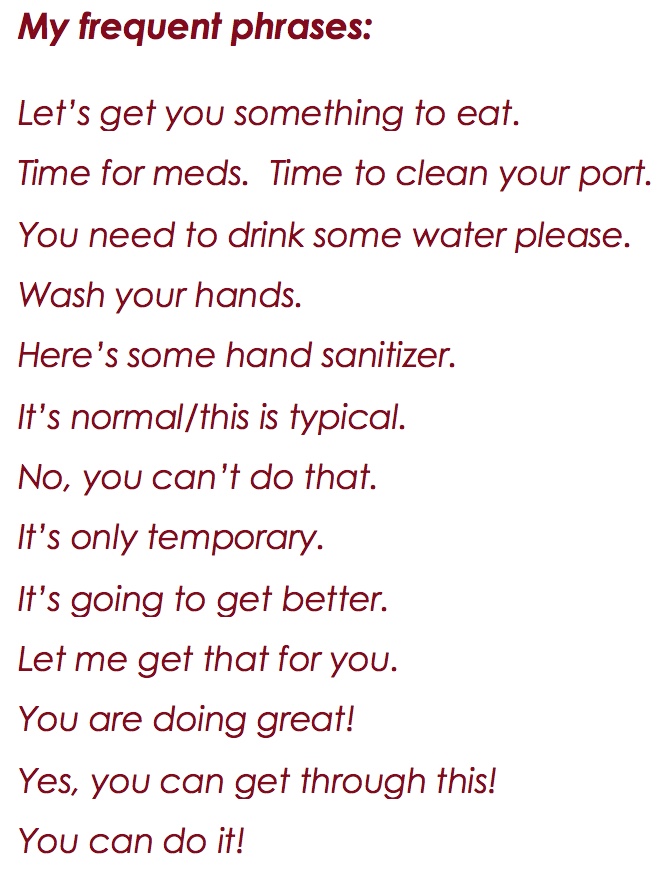
Young MPN patient “Jedi” with his companion Chewy
In the opening credits of the television show “The Fresh Prince of Bel Air” Will Smith sings, “This is the story/all about how/my life was turned/upside down.” This article is the story all about how OUR lives were turned upside down when our son, who we affectionately refer to as a “Jedi” because of his special blood, was diagnosed with a Myeloproliferative Neoplasm (MPN).
Our story is probably different from other adults/children with an MPN because Jedi wasn’t extremely sick before we discovered he had an MPN. For about two years, Jedi had experienced a variety of unexplained health issues — random fevers, flu, an estimated seven times over the preceding twelve months, and extreme pain in his legs. At the time, I attributed these conditions to allergies, or growing pains, things that boys normally experience at that age. This soon changed, however, when I took him in for his annual physical exam. The doctor suggested a blood test for Jedi after hearing about his recent health issues. I am not one who immediately agrees to testing, but I agreed when the doctor said to me, “if it was my son, I would do the test.” A week later, the doctor called and told me the blood test was contaminated and to immediately re-test Jedi, which we did. Two weeks later, I received a phone call from him, who told me he believed Jedi had Essential Thrombocythemia (ET), a condition I had never heard used before. His doctor then recommended we see a specialist who specialized in ET. It can be hard to diagnose a child with a MPN, because it is so rare. However, the doctor was a General Practitioner and had seen it in other adults. Thus, Jedi didn’t get extremely sick before diagnosis as so many of the children do.
The following Monday, I called the recommended specialist. The scheduler answered the phone by stating the name of the organization, which was “something something oncology.” Her words, more specifically one word – oncology – startled me. I held it together long enough to explain who I was and to ask for an appointment. Once the call was completed, I hung up the phone, closed my door and cried. Oncology? Why was an oncologist being recommended to see my beautiful eight-year old?
The results of Jedi’s first bone marrow biopsy revealed he had the JAK2 gene mutation. Jedi asked what a gene mutation was. I frantically tried to explain a gene mutation to my child. My first instinct was to tell him he was a mutant. I knew his next question was going to be, “What is my superpower?” I didn’t have an answer for that question, but realized he is like a Jedi, who has midi-cholorians, or special blood. That is what I explained to him.

Pediatric MPN Specialist Dr. Nicole Kucin, MD, MS, New York Presbyterian Hospital/Weill Cornell Medicine.
After initial difficulty finding a specialist who understood MPNs, we now have a talented team of specialists. He sees a local doctor every month. He also sees Dr. Nicole Kucine, MD, MS, an MPN specialist with Weill Cornell in New York City, click here to learn more. Dr. Kucine is performing a study on children with MPNs through the National Institutes of Health (NIH). If you have a child who has an MPN, I highly recommend contacting her. Last, Dr. Srdan Verstovsek (aka “Dr. V”) who is affiliated with MD Anderson in Houston, Texas, is part of the team. He is an Adult MPN specialist but performs a lot of work related to the JAK2 mutation. He has agreed to consult with Jedi’s Pediatric Hematologist, Dr. Michael Rytting, who is also at MD Anderson. As a result of Dr. V and Dr. Rytting’s recommendation, we have changed Jedi’s treatment plan from Hydroxyurea (HU) to Interferon.
In determining the appropriate treatment plan, some questions we asked were:
What are our options for treatments? What is the difference between each treatment? Are there timeframe limitations for each treatment? (The effectiveness of one of the drugs used to treat ET is limited to 5 years. That was information I did not know but extremely important to know given Jedi’s age – now nine years old!)
Are there any other patients using this same treatment? Have they experienced any side effects not listed on the medicine? Is the basis for our understanding of how this treatment affects the patient based on a different disease? For example, HU is commonly prescribed to patients with sickle cell anemia. Some doctors’ understanding of how HU impacts a patient is based on the their patients who have sickle cell anemia, which is a completely unrelated disease.
Additional questions to consider:
Is there a way to mitigate side effects?
Can we start with a lower dose and see if it works?
How long will it take for the medicine to start working?
What are the risks of not taking any medicine? What are the risks of taking this medicine?
Is there any research being done on these treatments?
In finding a local doctor, some questions we asked are:
Are you willing to work with other specialists in this field of medicine?
How do you propose to communicate with them?
Are you willing to follow the specialist’s instruction when treating my child?
Are you willing to consider diet as part of the treatment?
There a few ways to connect with other with MPN patients. I have gotten great information from Facebook support groups. Attending MPN conferences is another way to become informed and connected. We attended an MPN conference in February. Listening first-hand to specialists providing updates in the field and answering questions was like drinking from a firehose. Thankfully, MPN Advocacy & Education International posted the videos on the website, which allowed me the opportunity to repeatedly watch them to fully absorb the information the specialists provided, view conference videos. Being able to converse with the attendees at the conference was also extremely helpful. They shared their first-hand experiences and provided insight into what my child is going through. It is more difficult for a child to describe how he or she feels because what he or she experiences on an everyday basis is their “normal.” By sharing their experiences with me, the attendees were able to help me find the words to help my child describe how HE is feeling.
Part of this disease is a feeling of loneliness – for Jedi, Jedi’s brother (our other son), and my husband and me. Unlike more common disorders, finding and becoming part of a support group can be difficult for those with an MPN—especially since it is so rare in a child. That is why it is important for us to participate in conferences whenever possible. This Fall MPN Advocacy & Education Int’l is hosting a conference especially for children and young adults with MPNs. This is a fantastic opportunity for both parents and children to meet and get to know one another. We plan to attend this conference. Learn more about the Pediatric MPN event.
Finally, a plea to adults with an MPN. Please consider using the resources the MPN groups has provided, such as the tool that tracks symptoms. I know it can be concerning to share that information with a third party. (Believe me, I am wary of doing that myself.) But, any information YOU provide will help those that come behind you. Working together, we can collectively help each other and future generations better understand how to combat and defeat these diseases.
 Individuals with a parent, sibling or child with blood cancer appear to have a higher likelihood of also being diagnosed with the disease, according to study results published in Blood.
Individuals with a parent, sibling or child with blood cancer appear to have a higher likelihood of also being diagnosed with the disease, according to study results published in Blood.







